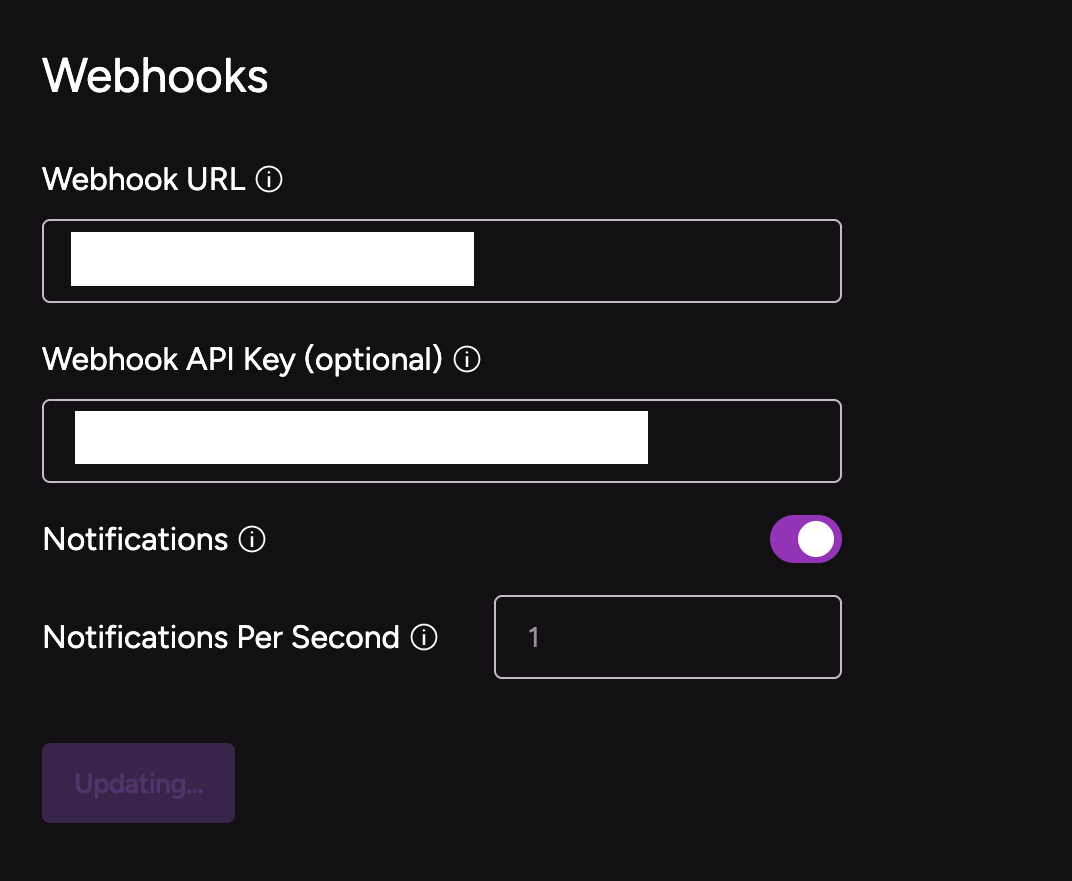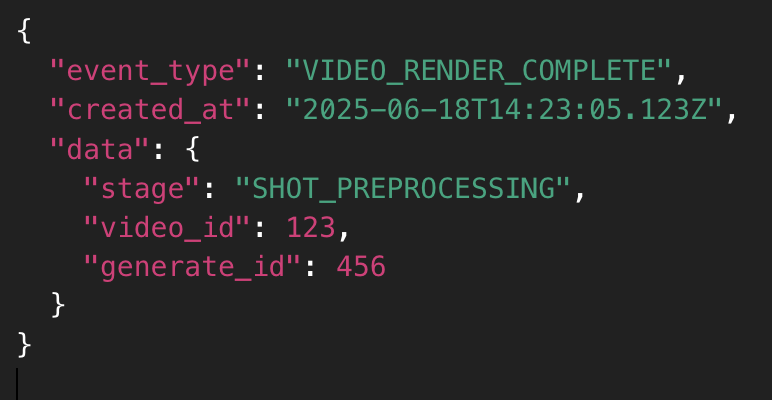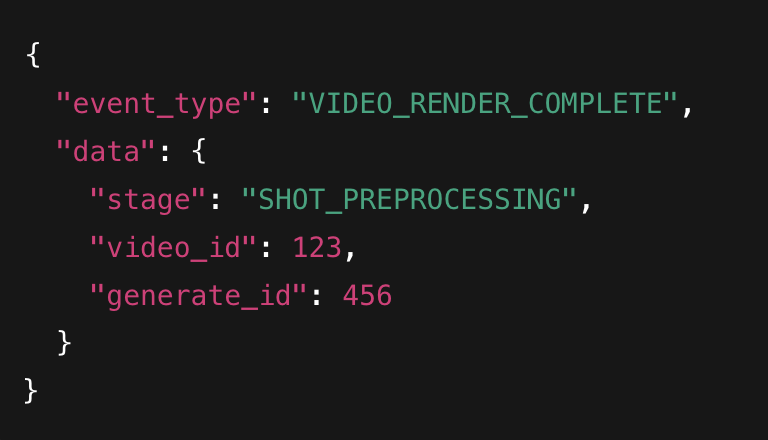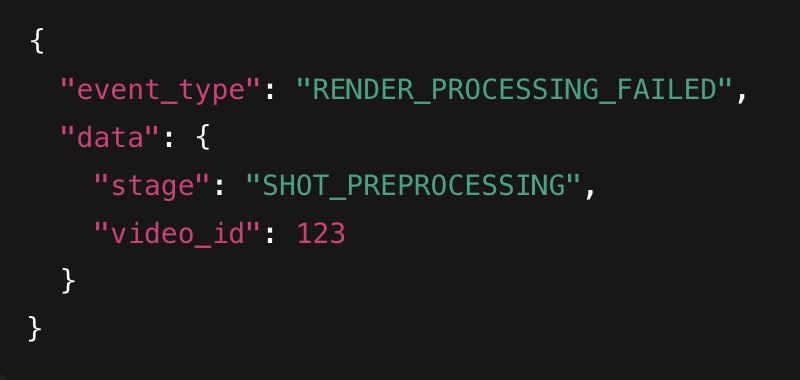LipDub can notify your system about key events (render complete/failed) via either a global tenant webhook or an optional per-job callback_url you send when creating a render. If a valid per-job URL is present, we deliver there; otherwise we use your tenant webhook.
Setup Steps
Log in to your LipDub AI dashboard.- Navigate to Settings > Webhooks.
- Enter your Webhook URL — this is the endpoint in your system that will receive event payloads.
- (Optional) Enter a Webhook API Key — if provided, this key will be included in the
Authorizationheader of each webhook request asBearer YOUR_API_KEY. This allows your system to verify that incoming webhooks are from our service. - Toggle Enable Notifications to begin receiving webhook events.
- Click Save. You're all set!

Your system should now begin receiving webhook events when relevant actions are triggered.
Per-Job Callback URLs (optional)
- Add
callback_urlwhen creating a render to receive events for that job at that URL. - HTTPS only, 24h TTL; after expiry we fall back to your tenant webhook.
- Manual re-submits of the same job reuse the original
callback_urlwhile it’s valid. Example (request body excerpt):

422 if invalid (non-HTTPS/private/too long).
Webhook Event Structure
Each webhook event is aPOST request with a JSON payload sent to your registered callback URL. The structure looks like this:

Common Fields
| Field | Type | Description |
|---|---|---|
| event_type | string | The type of event that occurred |
| created_at | string | ISO timestamp of when the event was triggered |
| data | data | Event-specific data payload |
We mirror the event name in the header X-LipDub-Event: <event_type>
Supported Events
VIDEO_RENDER_COMPLETE
Triggered when a video render finishes successfully.

RENDER_PROCESSING_FAILED
Triggered when a render fails to complete due to a system or processing error.

If enabled for your account, you may also receive: PREPROCESSING_COMPLETE, TRAINING_COMPLETE, FILE_UPLOAD_COMPLETE/FAILED, VIDEO_VALIDATION_COMPLETE/FAILED, BEGIN_TRAINING_FAILURE (each includes a stage in data).
Additional events may be added in the future as more capabilities are exposed.
Handling Errors
If LipDub AI cannot successfully deliver a webhook (e.g., your server returns a 4XX or 5XX), we will retry delivery up to 3 times using an internal queue system (Amazon SQS FIFO).After 3 failed attempts, the webhook will be moved to a Dead Letter Queue (DLQ) for inspection or manual replay by our support team.
To ensure reliable delivery:
- Respond with a
200 OKstatus as quickly as possible (preferably within 5 seconds) — slow responses may be treated as failures - Avoid doing long processing directly in the webhook handler — offload to background jobs if needed.
- Ensure idempotency, as webhook retries may result in duplicate payloads.
- TTL & fallback: Per-job
callback_urlis valid for 24h. After expiry we automatically deliver to your tenant webhook. - If needed, contact support to request a replay of undelivered events from the DLQ.
Testing Your Integration
If you want to verify your endpoint:- Use a tool like RequestBin or Webhook.site to inspect payloads.
- Trigger a test render in LipDub AI and confirm that your webhook URL receives the expected payload.
Security & Verification
Currently, webhook requests include:- A unique API key (used internally for now)
- Your configured webhook URL
- The payload data
- If you set a Webhook API Key, we send
Authorization: Bearer <WEBHOOK_API_KEY>(older tenants may seeX-Api-Key).
In the future, we may support request signing (e.g., HMAC header verification) for enhanced security. Let us know if this is important for your integration.
Troubleshooting
| Issue | Likely Cause | Suggested Fix |
|---|---|---|
| Not receiving any webhooks | Invalid or unreachable URL | Double-check your webhook URL in Settings > Webhooks |
| Receiving duplicate events | Retry behavior due to failed response | Ensure your handler returns 200 OK |
| Unknown event type | Event not handled on your end | Add logic to gracefully ignore unknown events |
| No per-job callback received | TTL expired or invalid URL | Confirm job is less than 24h old; ensure HTTPS/public |
| Retry went to tenant webhook | Expected after TTL expiry | Re-submit with a fresh callback_url; otherwise route via tenant webhook |
